It won’t surprise many, but startup funding for Web3 firms crashed last year. According to Crunchbase, VCs released the least amount of cash to crypto startups since 2020 – under $7 billion. This represents a drop of 74% year on year – a shock that many will no doubt attribute to the FTX collapse, which offers an easy explanation for why so many firms have struggled to gain funding. Thanks to ETFs and the upcoming halving, the forecast for 2024 is much sunnier, with recent successes, such as Hashkey gaining unicorn status, only reinforcing the theory that funds are about to start flowing again.
However, beware of simple narratives that belie more complex truths. For most of its existence before around 2021, crypto operated fairly independently of other markets, but the global economy was in a near-continual state of growth throughout that time.
In contrast, at this point in its evolution, the crypto sector is inextricably tied to events happening in the real world and the broader economy, thanks to institutional adoption and a heavier reliance on private equity funding. The idea that events intrinsic to digital asset space can still create conditions for Web3 startups that don’t exist in any other industry is simply no longer plausible.
With this in mind, even a bull market in crypto isn’t likely to buck broader trends in startup funding, which is predicted to stabilize in 2024. However, the levels of froth we saw in 2021 are unlikely to return.
This could end up being a positive turn of events for the crypto sector in the long term. Having been through successive boom and bust cycles while funding was easy to come by, crypto has only produced a small handful of truly successful projects and companies known to people outside of the space. On the other hand, half of all Fortune 500 companies were formed during a crisis. If diamonds are only created under pressure, then maybe now is a chance to shine rather than break, and these difficult conditions could finally yield household-name projects based on blockchain.
So, while the Web3 sector needs some respite from the dearth of funding and interest that we endured in 2023, the fact is that even a bull market won’t change reality – founders will need to work that much harder to get investment in 2024 and beyond. Success will require a solid strategy that sets your project apart from the competition.
The #1 priority – product-market fit
We can expect product-market fit to come under greater scrutiny from VCs since this is one area that’s proven difficult to pin down in the Web3 sector. The inability to analyze user behavior on blockchain platforms is one practical limitation. However, there are also complexities in Web3, such as the heavy involvement of decentralized communities and the multiple roles that any individual member may play – user, token holder, developer, or referrer. With so many groups and metrics, it’s too easy for bogus projects to feign success while genuine utility can struggle to make itself known.
While communities will always have a critical role to play in making Web3 projects a success, founders have an opportunity to stand apart from the competition by creating clear definitions of success for product-market fit using metrics relevant to the vertical. This may be user numbers, but it could also cover other measures of success such as TVL for DeFi dapps, number of listings for a marketplace, or level of engagement for games and social dapps.
These definitions and metrics should also be accompanied by a plan for bringing the product to the market, covering areas such as the extent to which users will be involved in the development process, the iterations involved in building and testing, and a high-level marketing strategy.
Strategic sources of funding
When seeking sources of funding, Web3 founders should also think strategically about how the funding source supports them in achieving their product-market fit. In this sector, this may involve thinking more critically than simply finding a VC who has relevant experience or a decent network of contacts.
For instance, many recently-launched Layer 2 platforms are currently operating generous grants programs in a bid to lure dapp development to their platforms. However, founders should have a clear understanding of the platform’s ecosystem, including the other types of dapps, the user numbers, and some insights into the user profile. Even the most generous grant won’t make a project a success if it cannot form partnerships and collaborations within its own ecosystem, or if there aren’t enough users on the platform to reach its product-market fit success metrics.
What’s more, even if a founder is willing to take a gamble on a new platform to get a generous grant, it may scupper their chances of getting further funding from VCs or other sources down the line if the project isn’t able to deliver on its product-market fit.
Take only what you need
While it may seem like a no-brainer, adopting a minimalist mindset to funding will help founders navigate the uncertainty in 2024. The Crunchbase numbers may have revealed a 74% drop in funding between 2022 and 2023, but when measured by the number of deals, the difference is only 46%. This means that while there’s a better hope of getting a deal, the amount invested is smaller when funding is tight.
Therefore, founders potentially have a lot to gain from keeping their pitch as tight as possible and being able to explain with sufficient granularity how funds will be used. The “Lambos and yachts” mentality of the past led to many Web3 entrepreneurs seeing funding as an end in itself. However, the fact is that any startup only needs to raise enough to get to the next funding round, and VCs have a right to be doubtful of any founder who is unable to justify the numbers behind their pitch. Furthermore, excessive funding can imply that a project is overvalued, which could result in a detrimental revaluation further down the line.
Ultimately, the changes we see in the Web3 funding landscape are aligned with those happening in the broader crypto sector as it matures and becomes more closely interconnected with traditional financial markets and the sentiments driving the broader economy. While this will make it more of a challenge to obtain funding, it also offers an opportunity for founders to differentiate themselves by keeping step with the changes, developing a strategic plan for achieving product market fit.
Read Also: How Will the 2024 Bitcoin Halving Impact Price, Mining Rewards, and Future Trends?



